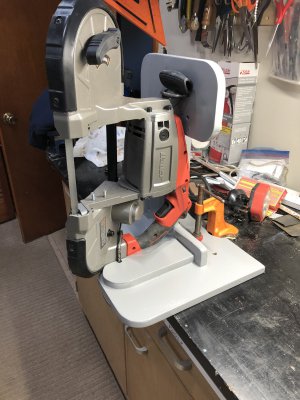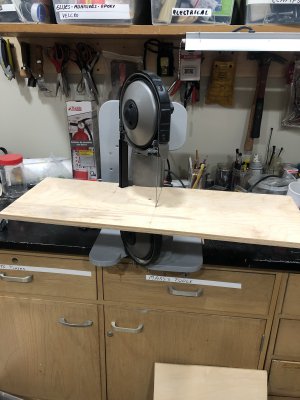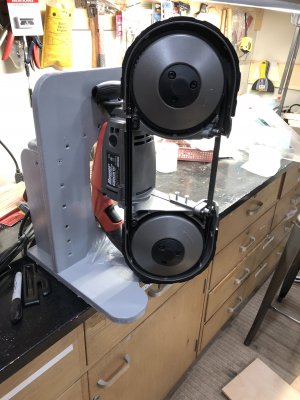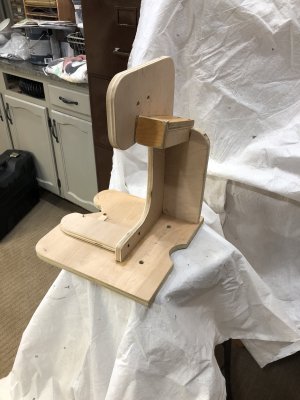Ive done a lot of cutting on mild steel over the past couple years with projects and have thought about getting a band saw. Truth be told, all my power tools, aside from a cheap table saw for wood and a floor drill press, are hand tools at the moment. In time I hope to change that. That having been said - using hand power tools to cut a bunch(!!!) of steel is not pleasant. I ripped several hundred inches of 3/16" A36 with a reciprocating saw and Diablo carbide blade last summer. I hope I never have to do that again. Though, it is an example of a potential use for a band saw.
However, there seems to be a fairly large cut between "wood band saws" and "metal band saws" in that "wood band saws" are upright with a table where you feed the work through the cut and "metal band saws" are a fixed frame with clamped work and the whole band saw assembly gravity (or pneumatic) feeds through the clamped work.
In thinking of how I want to work with my projects - an upright saw with a table where I move the work through the saw is what I want. But that fits the category of a wood working band saw.
I don't like the idea of clamping the work piece and using a gravity fed saw. I suppose if I was cutting routine dimensional parts with square cuts that is one thing, but that is too limiting. I want to be able to cut angles, and possibly curves. Most tables have a keyway track for a miter gage. Why not make a vice mount that can lock in to that track to keep the piece passing straight through the blade?
Are there any drawbacks for setting up a wood band saw for metal duty?
I suppose one advantage to a properly set up "metal band saw" is the coolant/lube system. For repetitive dimensional cutting I could see that being about the only way to go, but I think the limits of the ability to work with the work piece during the cut might be a better advantage than needing to manually lube the cut.
However, there seems to be a fairly large cut between "wood band saws" and "metal band saws" in that "wood band saws" are upright with a table where you feed the work through the cut and "metal band saws" are a fixed frame with clamped work and the whole band saw assembly gravity (or pneumatic) feeds through the clamped work.
In thinking of how I want to work with my projects - an upright saw with a table where I move the work through the saw is what I want. But that fits the category of a wood working band saw.
I don't like the idea of clamping the work piece and using a gravity fed saw. I suppose if I was cutting routine dimensional parts with square cuts that is one thing, but that is too limiting. I want to be able to cut angles, and possibly curves. Most tables have a keyway track for a miter gage. Why not make a vice mount that can lock in to that track to keep the piece passing straight through the blade?
Are there any drawbacks for setting up a wood band saw for metal duty?
I suppose one advantage to a properly set up "metal band saw" is the coolant/lube system. For repetitive dimensional cutting I could see that being about the only way to go, but I think the limits of the ability to work with the work piece during the cut might be a better advantage than needing to manually lube the cut.





